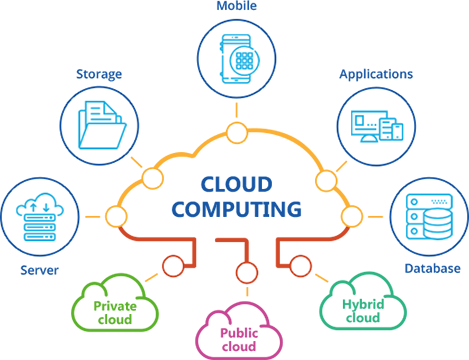Remain Updated with the Cloud Services Press Release: Patterns and Advancements
Achieve Seamless Scalability With Cloud Services
In the ever-evolving landscape of cloud solutions, attaining seamless scalability stands as a foundation for modern businesses looking for to stay adaptable and affordable. The capability to easily expand or acquire sources in action to transforming needs is an essential advantage in today's busy electronic atmosphere. By grasping the art of scalable cloud remedies, companies can not only maximize performance and simplify operations yet likewise lead the way for future development and advancement. The quest for smooth scalability with cloud services reveals a globe of possibilities for those happy to embrace the transformative power of vibrant resource administration.
Benefits of Cloud Scalability
Cloud scalability supplies companies the adaptability to dynamically adjust resources based on need, guaranteeing ideal efficiency and cost efficiency. One crucial benefit is the ability to range resources up or down promptly in reaction to fluctuating workloads. This agility makes it possible for businesses to meet changing customer needs without over-provisioning resources, inevitably leading to cost savings. Scalability also enhances performance by ensuring that systems can deal with enhanced traffic or workload without experiencing downtime or slowdowns. By efficiently designating resources, organizations can maintain high levels of efficiency throughout peak times without unneeded expenditures throughout quieter durations. In addition, cloud scalability advertises innovation and testing by enabling businesses to easily examine originalities and scale them as needed. This adaptability urges a society of constant improvement and adjustment, making it possible for companies to stay affordable in a quickly progressing market landscape. Eventually, the benefits of cloud scalability extend past expense savings to encompass better performance, agility, and technology.
Trick Attributes for Scaling
Effective scaling in cloud solutions counts on key functions that enable companies to adjust resources dynamically based upon demand. One essential function for scaling is flexibility, allowing sources to scale up or down in response to fluctuating work. This ensures that organizations can fulfill performance demands without over-provisioning sources. Another crucial feature is scalability, making it possible for systems to deal with raised workload by including sources seamlessly. This attribute is important for accommodating development without jeopardizing performance. Furthermore, automation plays a vital function in scaling by automating the provisioning and de-provisioning of resources based on predefined policies. Automation lowers human intervention, improves performance, and makes certain rapid reaction to altering demands. Surveillance and analytics devices are additionally important for scaling, offering insights into source application, efficiency metrics, and possible traffic jams. These tools allow companies to maximize and make enlightened choices source allowance for efficient scaling. Overall, these key features collectively empower companies to attain smooth scalability in cloud solutions.
Applying Auto-Scaling Methods
To successfully maximize resource allocation and adapt to differing work, companies have to purposefully implement auto-scaling techniques in their cloud services framework. Auto-scaling enables systems to instantly readjust the number of calculate resources based upon real-time demand. There are numerous auto-scaling techniques that companies can employ, such as anticipating scaling, which utilizes historic information to anticipate future resource demands, and responsive scaling, which reacts to existing workload adjustments.

Finest Practices for Scalability
For organizations intending to improve their scalability in cloud services, executing ideal methods is vital for ideal efficiency and source administration. One key ideal method is creating applications with a microservices architecture. This strategy breaks down applications into smaller, independent services that can be learn the facts here now released, updated, and scaled individually, permitting for greater versatility and scalability.
An additional important method is using containerization modern technology, such as Docker or Kubernetes. Containers allow the product packaging of applications and their reliances right into isolated devices, making it simpler to scale parts separately and release them constantly across different settings.
Furthermore, applying automated implementation and facilities as code (IaC) can enhance scalability efforts (linkdaddy cloud services). Automation devices like Terraform or Ansible help in provisioning and handling sources effectively, decreasing hands-on mistakes and enabling fast scalability
In addition, keeping an eye on performance metrics, establishing alerts, and carrying out normal ability planning are necessary practices to guarantee aggressive scalability management. By adhering to these ideal practices, companies can achieve smooth scalability in their cloud services while maximizing performance and resource utilization.
Tracking Efficiency Metrics
When assessing the effectiveness of cloud services scalability, closely monitoring performance metrics is imperative for guaranteeing ideal capability and source allowance. By constantly tracking essential performance signs (KPIs) such as action times, latency, resource, and throughput utilization, companies can obtain important insights into the wellness and performance of their cloud framework. Checking performance metrics allows for the very early discovery of prospective traffic jams or concerns that could affect scalability, enabling aggressive actions to be taken to resolve them before they rise.

Conclusion
Finally, achieving seamless scalability with cloud solutions is crucial for organizations to maximize efficiency, enhance advancement, and keep high efficiency levels during peak times. By leveraging the benefits of cloud scalability, applying auto-scaling approaches, using essential visit homepage features such as flexibility and automation, and complying with best techniques like application style and performance surveillance, services can effectively scale their systems while optimizing resource utilization and efficiency.
The mission for seamless scalability with check here cloud solutions unveils a globe of possibilities for those eager to accept the transformative power of vibrant resource monitoring.
Cloud scalability provides companies the flexibility to dynamically adjust sources based on demand, making sure ideal efficiency and expense performance. An additional crucial feature is scalability, allowing systems to handle raised workload by including sources perfectly.For companies intending to enhance their scalability in cloud services, applying finest techniques is critical for optimal performance and resource administration.When analyzing the effectiveness of cloud solutions scalability, closely keeping track of performance metrics is critical for making sure optimum functionality and resource allocation.